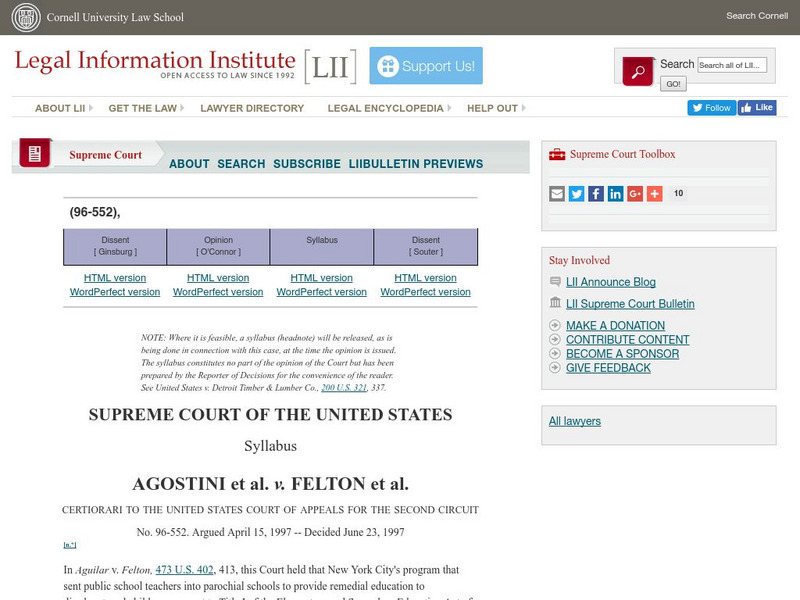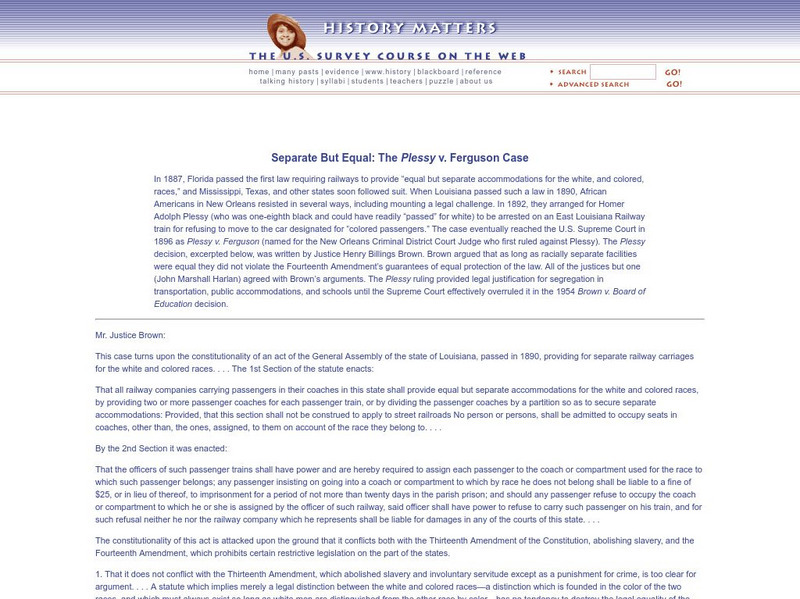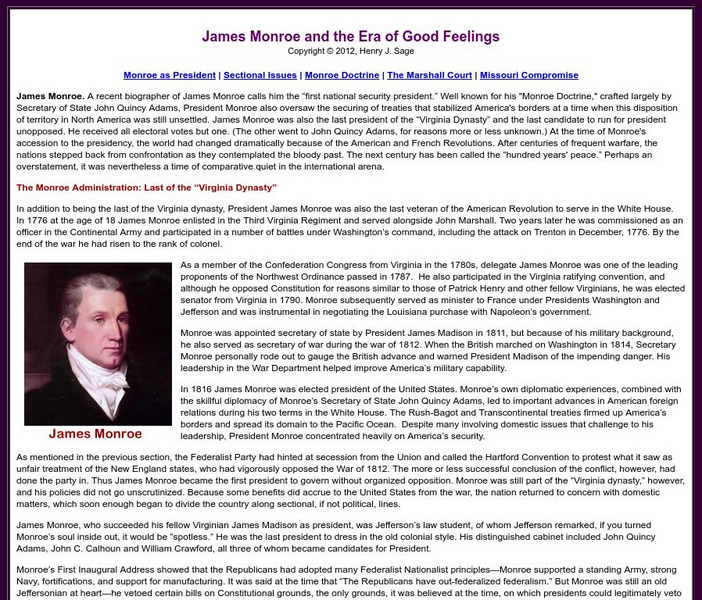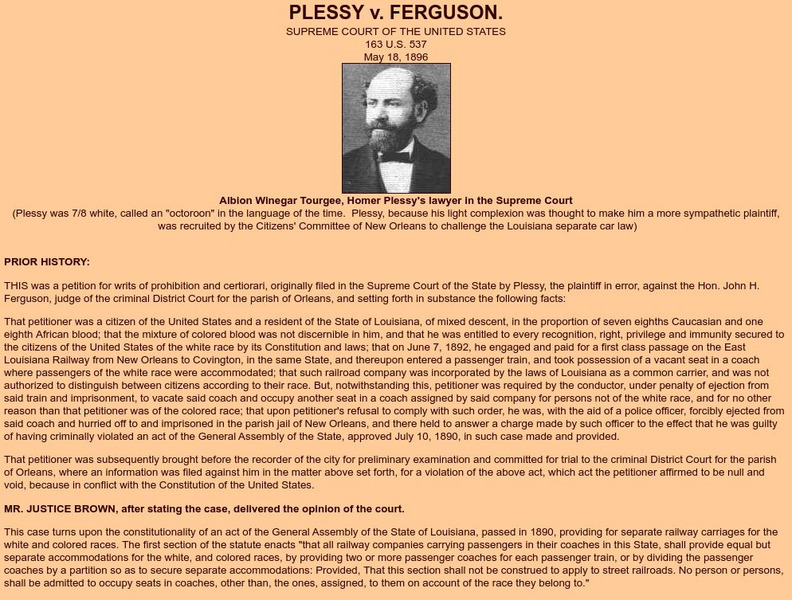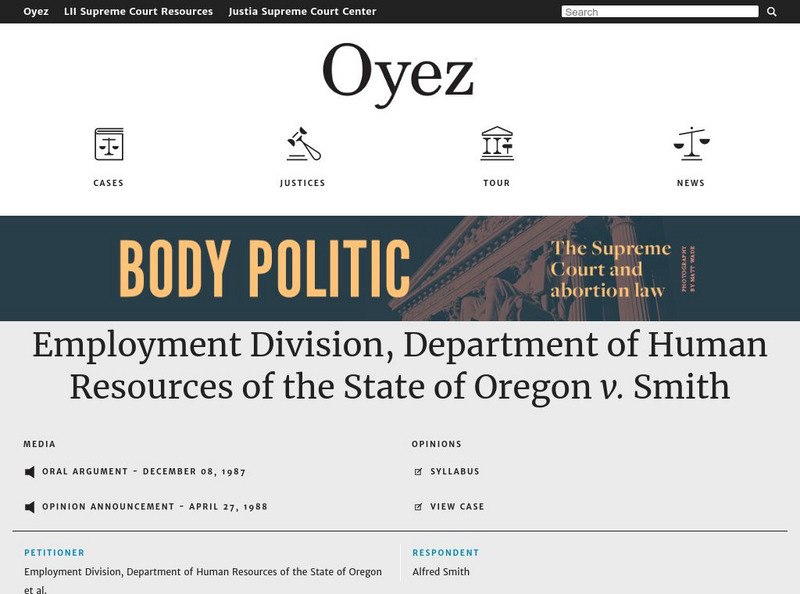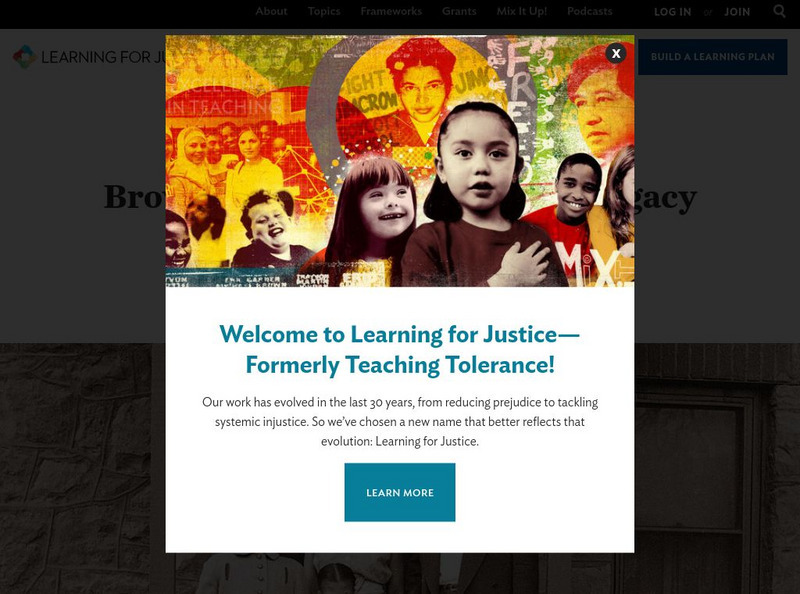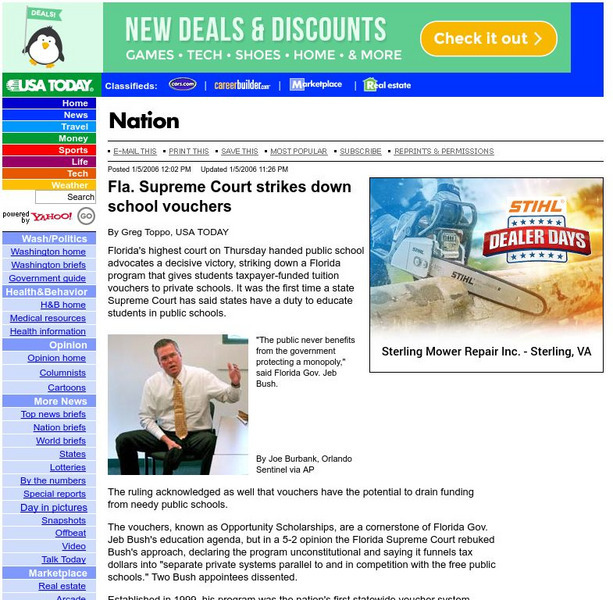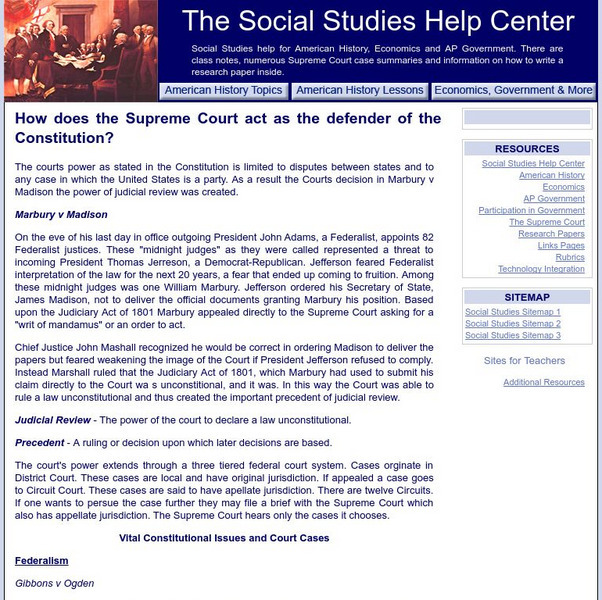Hi, what do you want to do?
Other
Canadian Legal Fa Qs: Charter of Rights and Freedoms Fa Qs
By answering some important questions about the role of the Charter of Rights and Freedoms in the court system, this resource gives insight to the multiple ways the Charter impacts Canadians and the role the Supreme Court has in...
Cornell University
Cornell University: Law School: Gore v. Bush (2000)
Provides a collection of facts on the landmark Supreme Court case of Gore v. Bush which stated that the Florida Supreme Court's method for recounting ballots was a violation of the Equal Protection Clause of the Fourteenth Amendment.
Cornell University
Cornell University: Law School: Agostini v. Felton (1997)
Offers the full text of the Supreme Court landmark decision on Agostini v. Felton. This case dealt with the issue of the Establishment Clause of the First Amendment.
Cornell University
Cornell University: Law School: In Re Gault (1967)
Presents the syllabus of the landmark Supreme Court case of In re Gault which decided that juveniles tried for crimes in delinquency proceedings should have the right of due process protected by the Fourteenth Amendment.
This Nation
This nation.com: Branzburg v. Hayes
ThisNation.com offers the "Opinion of the court by Mr. Justice White," for the Supreme Court case of Branzburg v. Hayes, 1972.
Curated OER
History Matters: Separate but Equal: The Plessy v. Ferguson Case
Read the judgment of Supreme Court justice, Henry Billings Brown, who wrote for the majority in the Plessy v Ferguson decision that codified the idea of "separate but equal" in the American justice system until it was overturned by Brown...
Henry J. Sage
Sage American History: James Monroe and the Era of Good Feelings
A complete look at the administration of James Monroe and the policies of the Era of Good Feelings. You can read about the domestic policies, foreign affairs, and important decisions of the Supreme Court made during the Monroe...
Other
Seattle Times: A Resource Divided
This article tells about the 1971 Supreme Court ruling in which Native Americans were able to keep fishing rights promised in earlier treaties.
Library of Congress
Loc: Slaves and the Courts
Slaves and the Courts, 1740-1860 contains just over a hundred pamphlets and books (published between 1772 and 1889) concerning the difficult and troubling experiences of African and African-American slaves in the American colonies and...
University of Groningen
American History: Documents: The Marshall Cases:cherokee Nation v. Georgia
This resource presents the text of John Marshall's majority opinion in the Supreme Court case, Cherokee Nation v. Georgia.
National Institutes of Health
Ncbi: What Does Cruzan Mean to the Practicing Physician?
Discusses patient rights in regards to refusing treatment that may save their lives. The Supreme court held that patients have a constitutional right to refuse treatment.
University of Missouri
Exploring Constitutional Conflicts: Plessy v Ferguson
Read the Supreme Court opinion that solidified the concept of separate, but equal in American law. The dissenting opinion written by Justice John Harlan is also included.
Other
Landmark Cases: Gideon v. Wainwright (1963)
This provides a wealth of information about this landmark Supreme Court case. There are excerpts from the opinions, background summaries, and many learning activities for teachers to use.
Other
Landmark Cases: Regents of University of Ca v. Bakke (1978)
Read the background summary and the complete text of this important Supreme Court case that dealt with affirmative action. Included are many teacher directed activities to use to support the teaching of this case.
Other
Landmark Cases: United States v. Nixon (1974)
This is a great resource for teaching about this key Supreme Court case that dealt with the issue of executive privilege, and became known as the Watergate Scandal. Included is the complete text of the opinion.
University of Minnesota
The Fourteenth Amendment and the Rights Revolution: Muller v. Oregon
In the Progressive Era many states passed laws to protect workers and establish decent working conditions. Read the text of Muller v. Oregon, heard before the Supreme Court in 1908, that upheld Oregon's laws as constitutional.
OpenStax
Open Stax: The Dred Scott Decision and Sectional Strife
By reading this section from a chapter on "The Tumultuous 1850s," students will understand the importance of the Supreme Court's Dred Scott ruling and be able to discuss the principles of the Republican Party as expressed by Abraham...
Illinois Institute of Technology
Oyez Project: u.s. Supreme Court Cases: Employment Division v. Smith
A case of whether states can deny employment to people who have been found to use illegal drugs for religious purposes.
Other
Learning for Justice: Brown v. Board: An American Legacy
An article celebrating the 50th anniversary of the famous Brown v. Board Supreme Court decision. Features background information, a timeline of integration of schools, interviews, and links to many other activities and resources covering...
USA Today
Usa Today: Fla. Supreme Ct. Strikes Down School Vouchers
News Article from January 5, 2006 regarding the Florida's Supreme Court's decision that school vouchers were unconstitutional.
Social Studies Help Center
Social Studies Help Center: The Supreme Court as Defender of the Constitution
This site gives you examples of court cases demonstrating how the Supreme Court upholds the constituion. It also includes links to further information.
University of Groningen
American History: Documents: u.s. V. e.c. Knight and Co. 1895
View the complete text of the 1895 Supreme Court case of the United States v. E.C. Knight and Co. which concerned the Sherman Antitrust Act.
Independence Hall Association
U.s. History: The Dred Scott Decision
Read the terms of the Dred Scott decision which determined that the Missouri Compromise was unconstitutional. See why this decision was so controversial and completely unacceptable to the northerners, thus driving an additional wedge...
Digital History
Digital History: The Controversial Dred Scott Decision [Pdf]
The Dred Scott case was a test case on whether African-Americans, whether free or slave, had any rights. Find out what led up to this controverisal decision, and read the reasoning of the majority opinion as expressed by Chief Justice...







